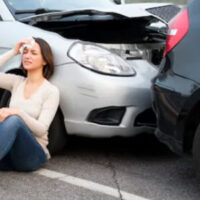The Driver Who Rear-Ended Me Was Rear-Ended by the Car That Was Following Them. Who Is Liable for My Damages?

Being involved in a car accident can be a traumatic experience. A car accident can leave you with severe injuries and substantial financial losses. Fortunately, car accident victims in Florida can seek compensation for their injuries and damages from liable parties. In some cases, it is easy to determine who is responsible for the damages incurred by the victim. However, determining who is liable for the damages incurred by the injured party can be challenging in other cases. For example, if you were rear-ended by a driver who was rear-ended by another driver, who is liable for your injuries and damages? In this article, we discuss the dynamics of chain reaction accidents or multi-car accidents. Read on to find out how liability is determined in such accidents.
What Is a Chain Reaction or Multi-Car Accident?
A chain reaction or multi-car accident is an accident involving at least three vehicles. In this type of accident, the impact of an initial collision sets off a series of subsequent collisions. Multi-car accidents happen in rapid succession, creating a domino effect. Because more vehicles are involved in chain reaction accidents, these accidents usually result in more injuries.
Liability in Chain Reaction or Multi-Car Accidents
Determining liability after a chain reaction collision can be challenging because of the involvement of multiple cars. If you were involved in a rear-end accident where the driver who rear-ended you was rear-ended by another driver, the presence of a third driver adds a level of complexity to your case. Do you hold the driver who hit you or the third driver liable? Or do you hold both drivers responsible? Often, in such a case, the third driver (the one who initiated the chain reaction) is considered primarily responsible for the accident. However, this does not mean the driver who hit your car cannot be liable for your injuries and damages.
Assessing liability in a multi-car accident revolves around the concept of negligence. Negligence refers to the failure to exercise the level of care a reasonably prudent person would have exercised under similar circumstances. In a scenario where the driver who hit you was rear-ended by another car, the two driver’s actions will be assessed to determine if they acted negligently and how each driver contributed to the accident. For example, the third driver might have hit the driver who hit you because they were following too closely and could not stop on time. The driver who hit you may have been unable to react on time because, for example, they were distracted. In such a case, both drivers share fault for your injuries and damages,
Florida’s comparative negligence law requires that fault be allocated among all the parties involved in a collision and each party be held liable for their percentage of fault. If the two drivers are to blame for your accident, fault will be allocated between them, and each driver will be responsible for their percentage of fault.
Contact Us for Legal Help
Contact our West Palm Beach personal injury attorneys at The Pendas Law Firm for legal help if you were involved in a chain reaction collision.
The Pendas Law Firm also represents clients in the Fort Lauderdale, Miami, Fort Myers, Ocala, Orlando, Jacksonville, Bradenton, Daytona Beach, Naples, Melbourne, and Tampa areas.






